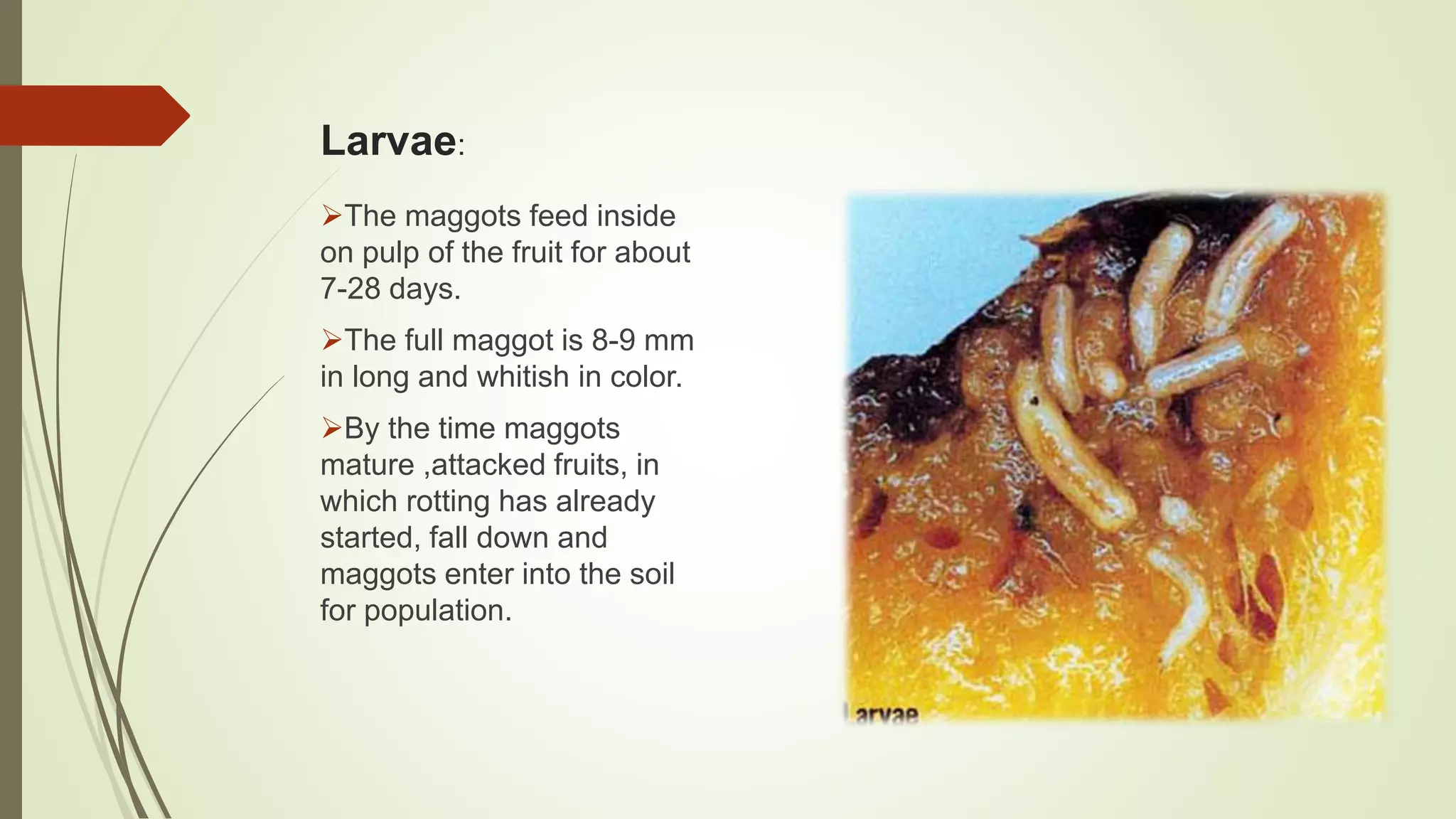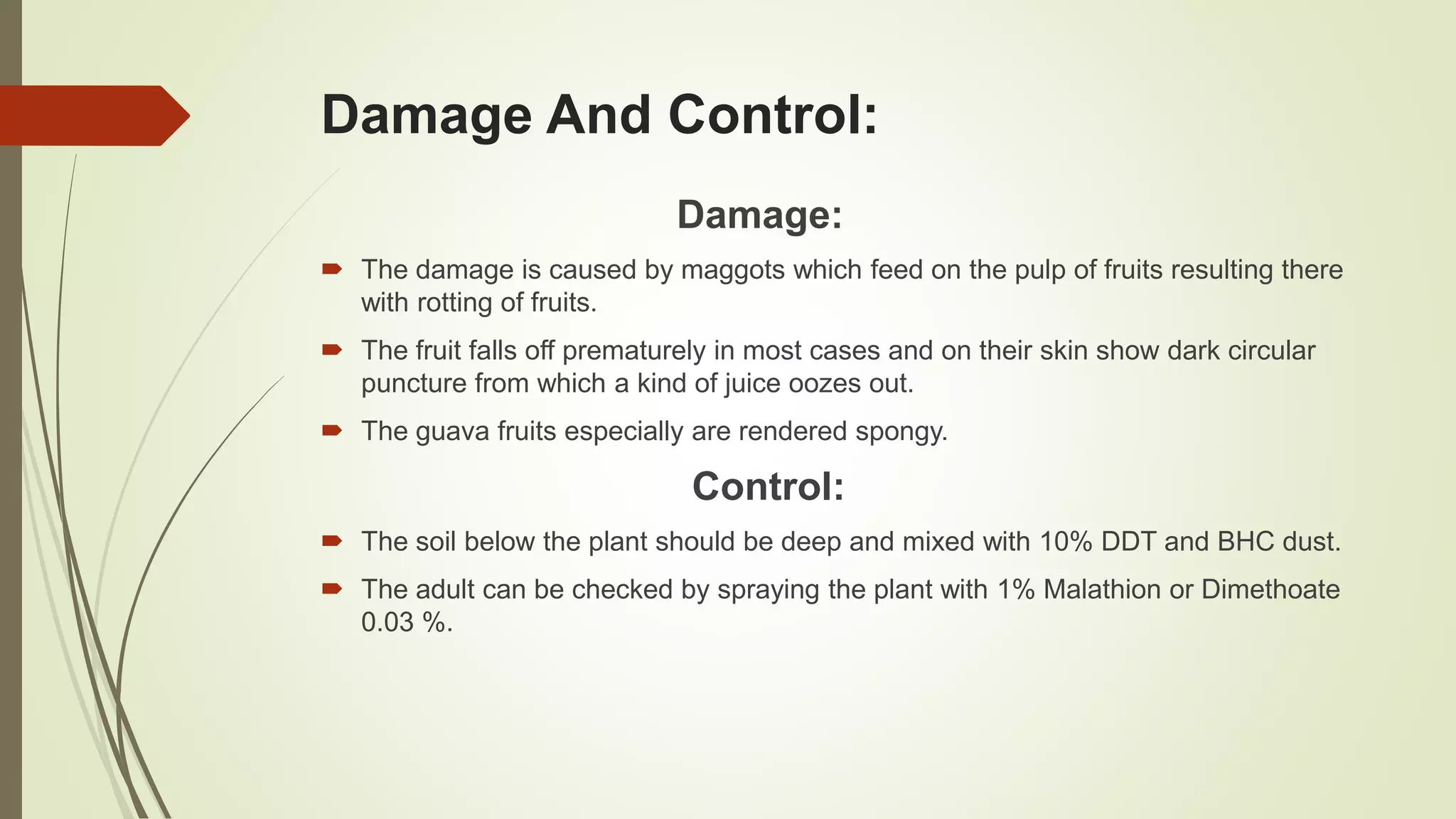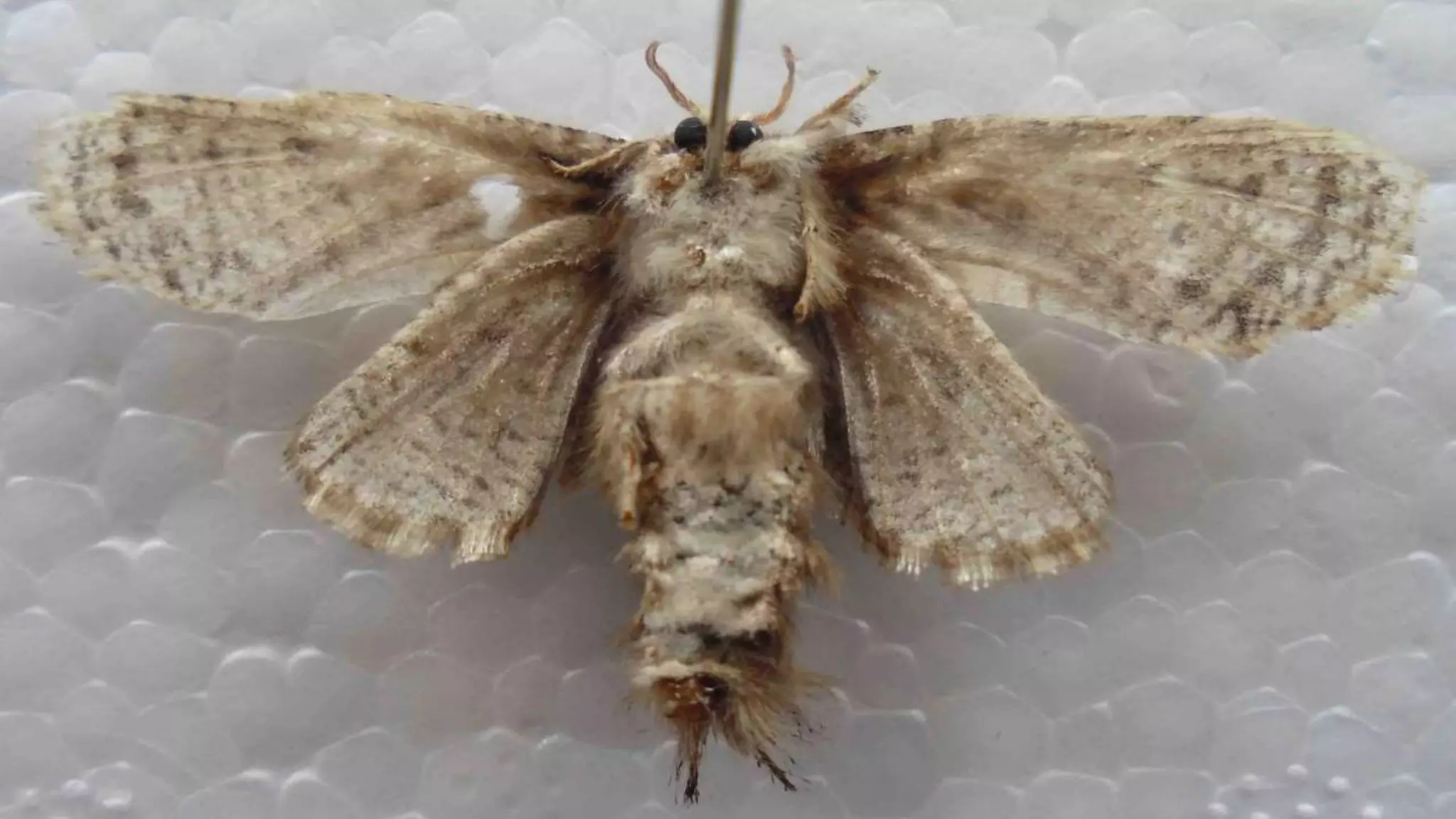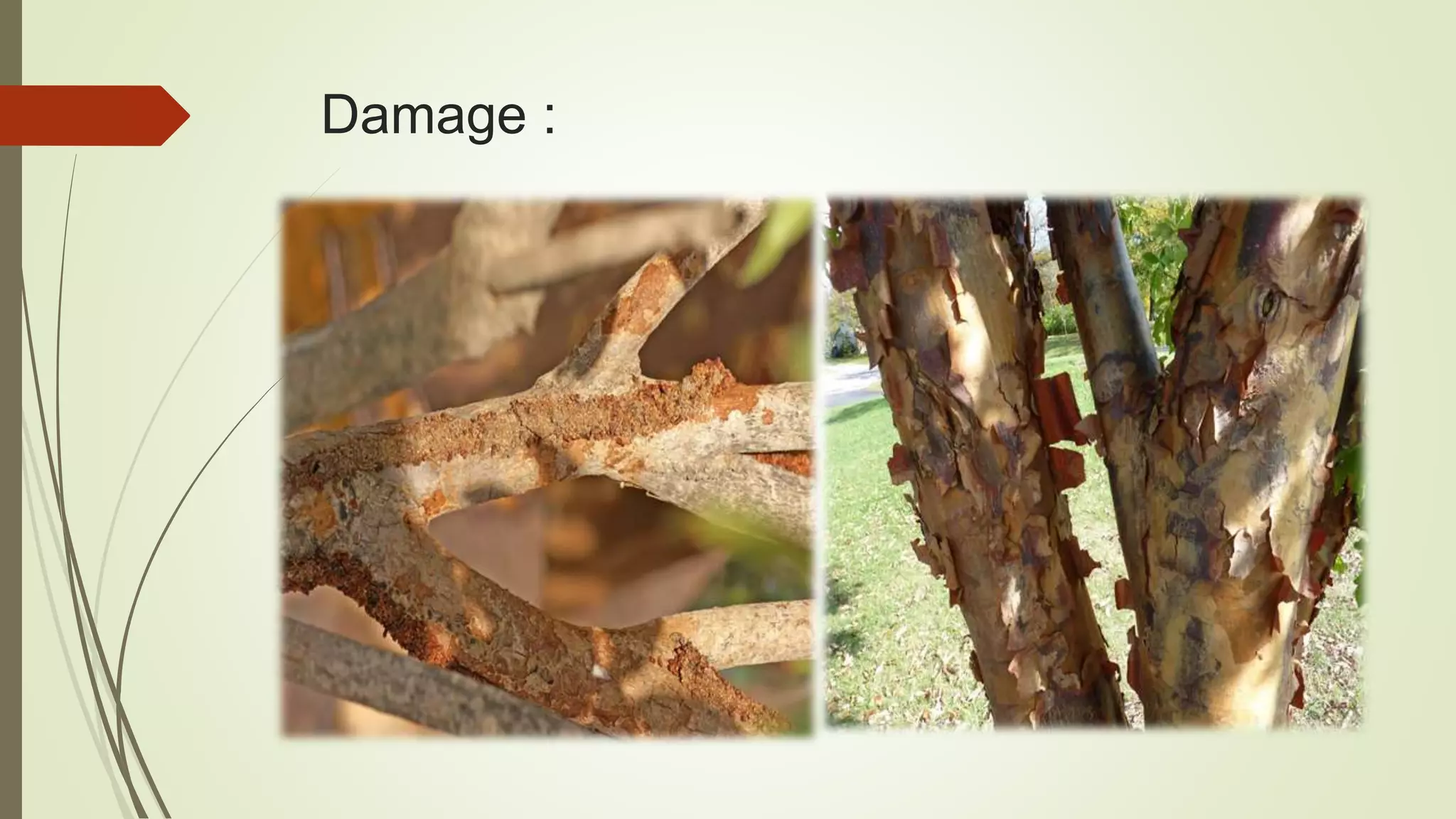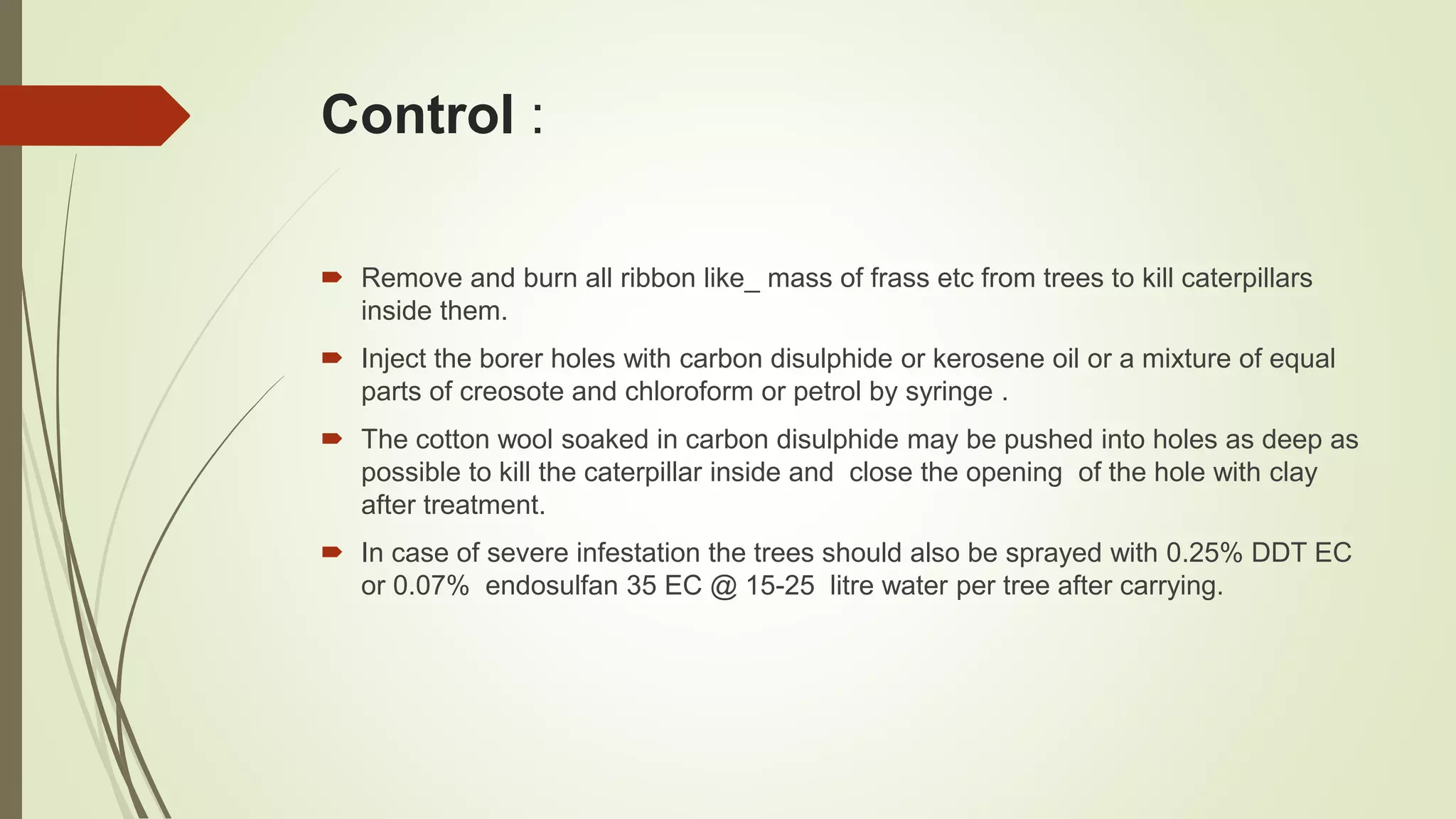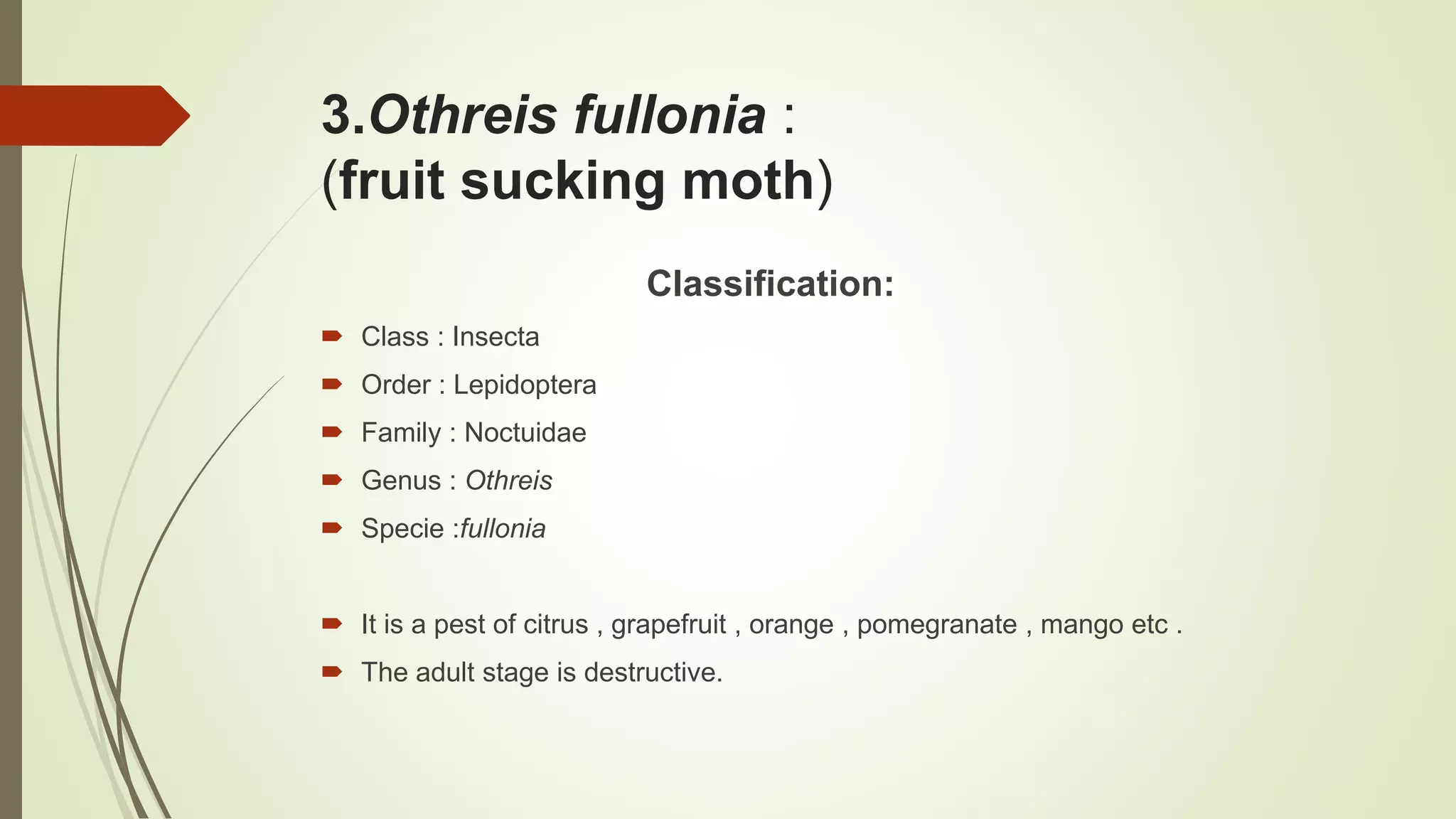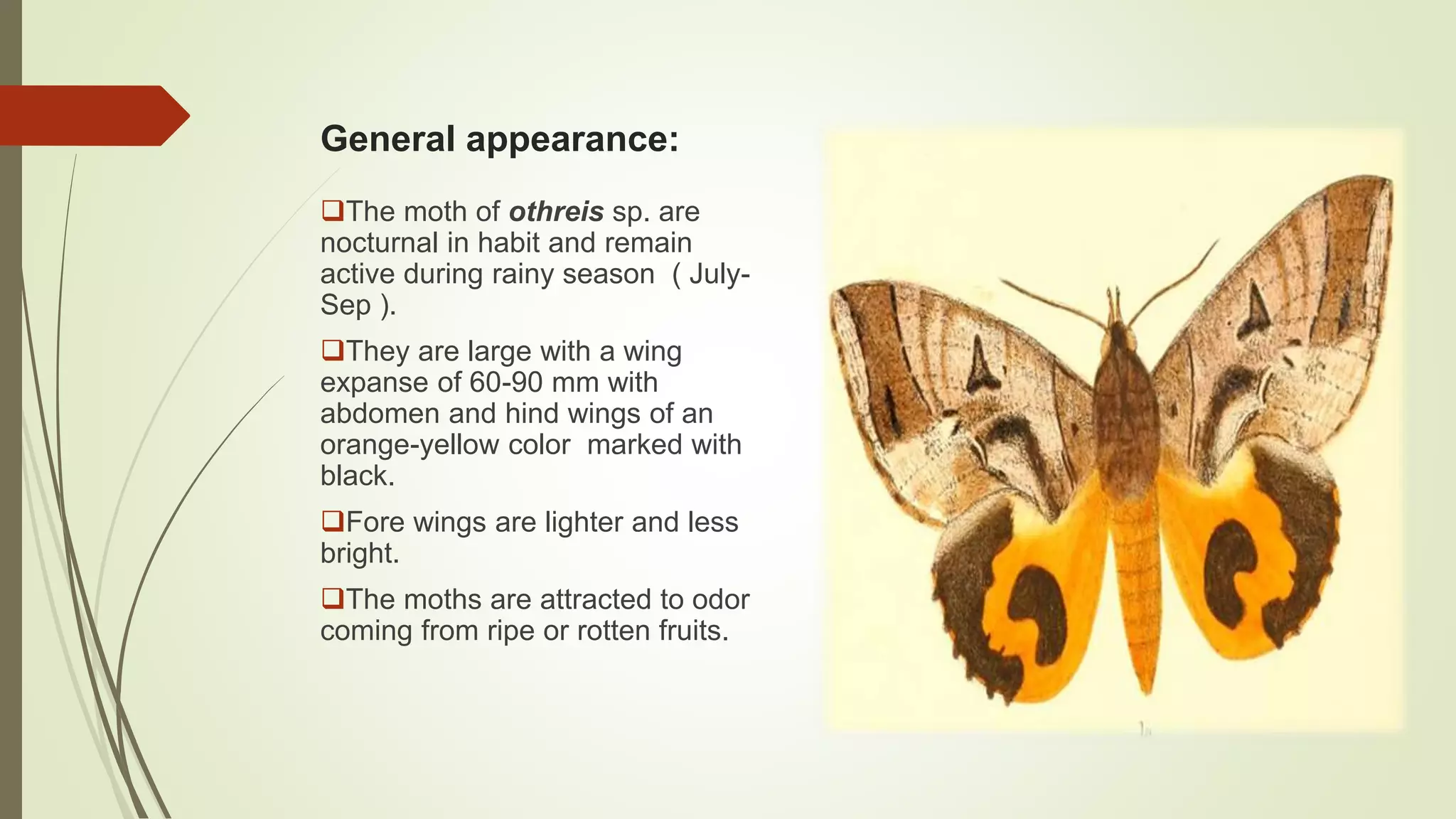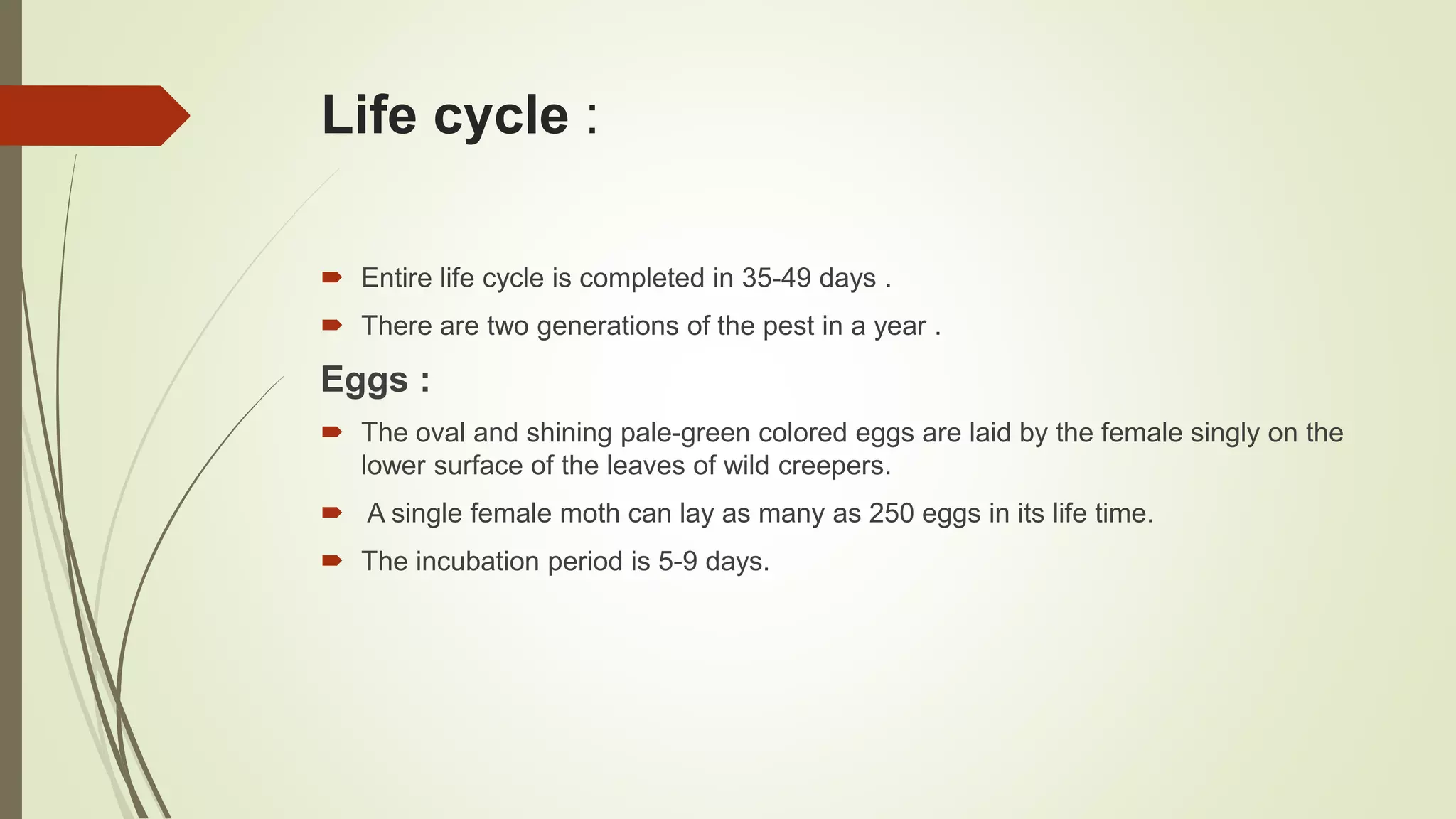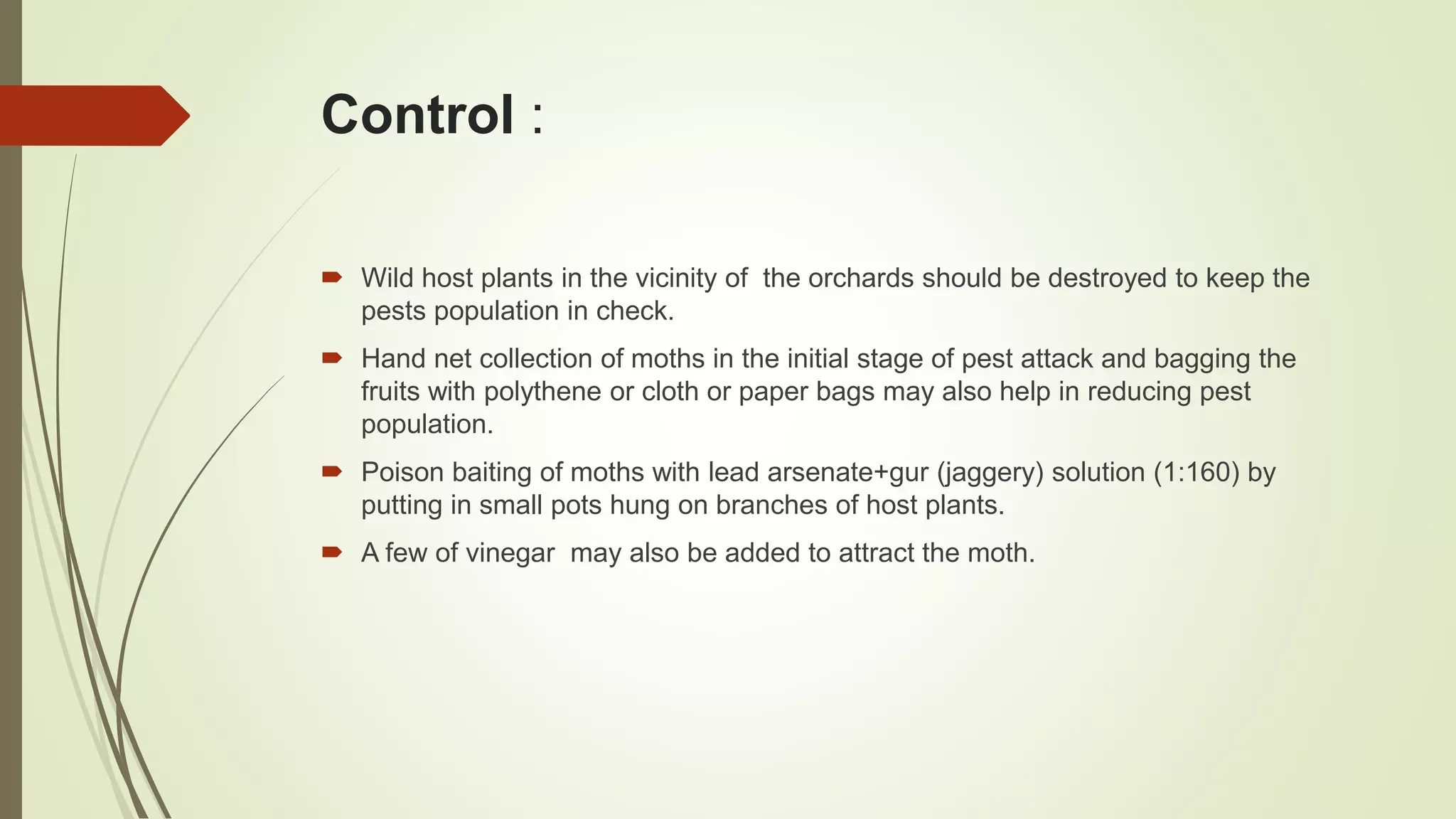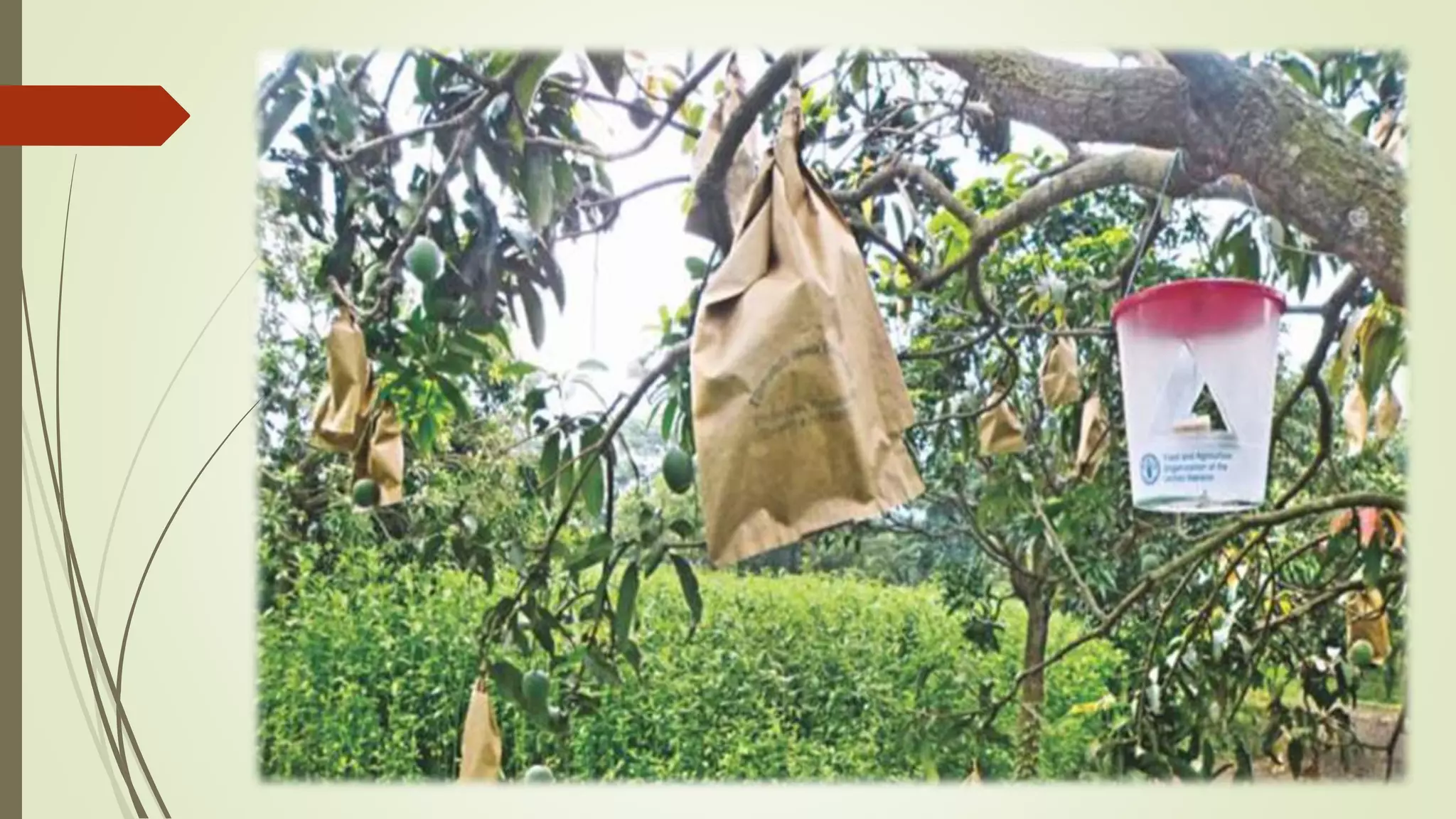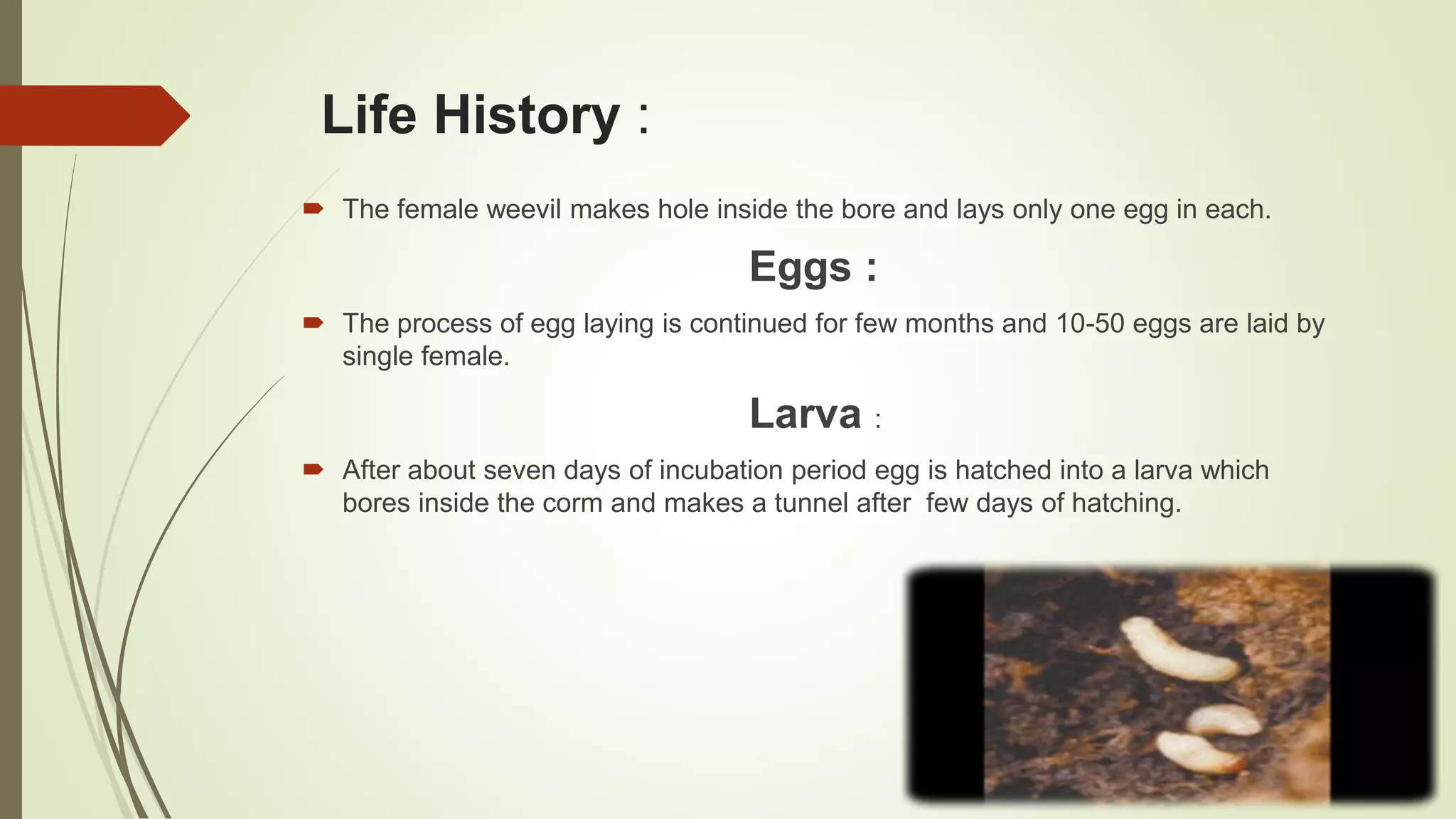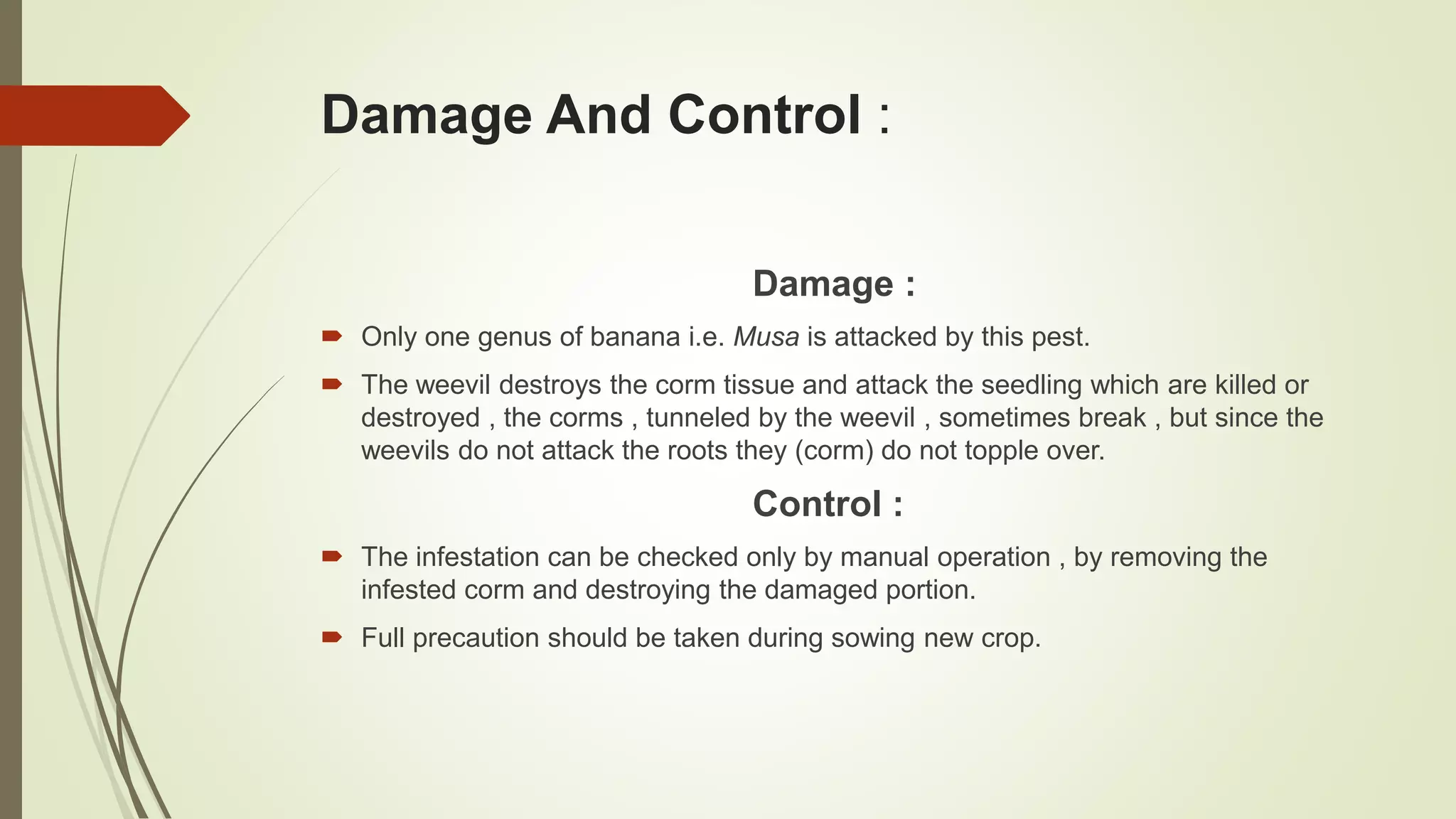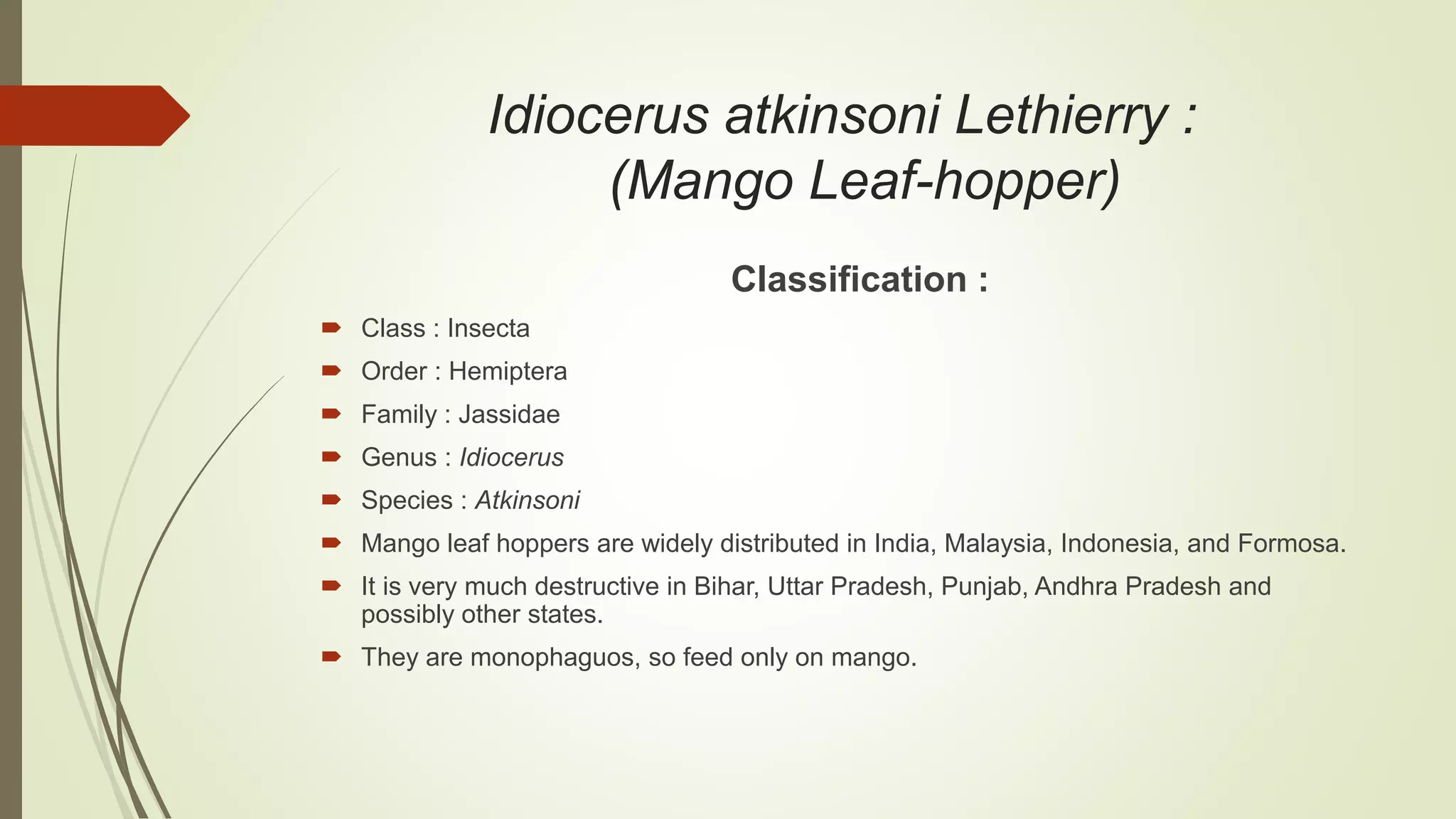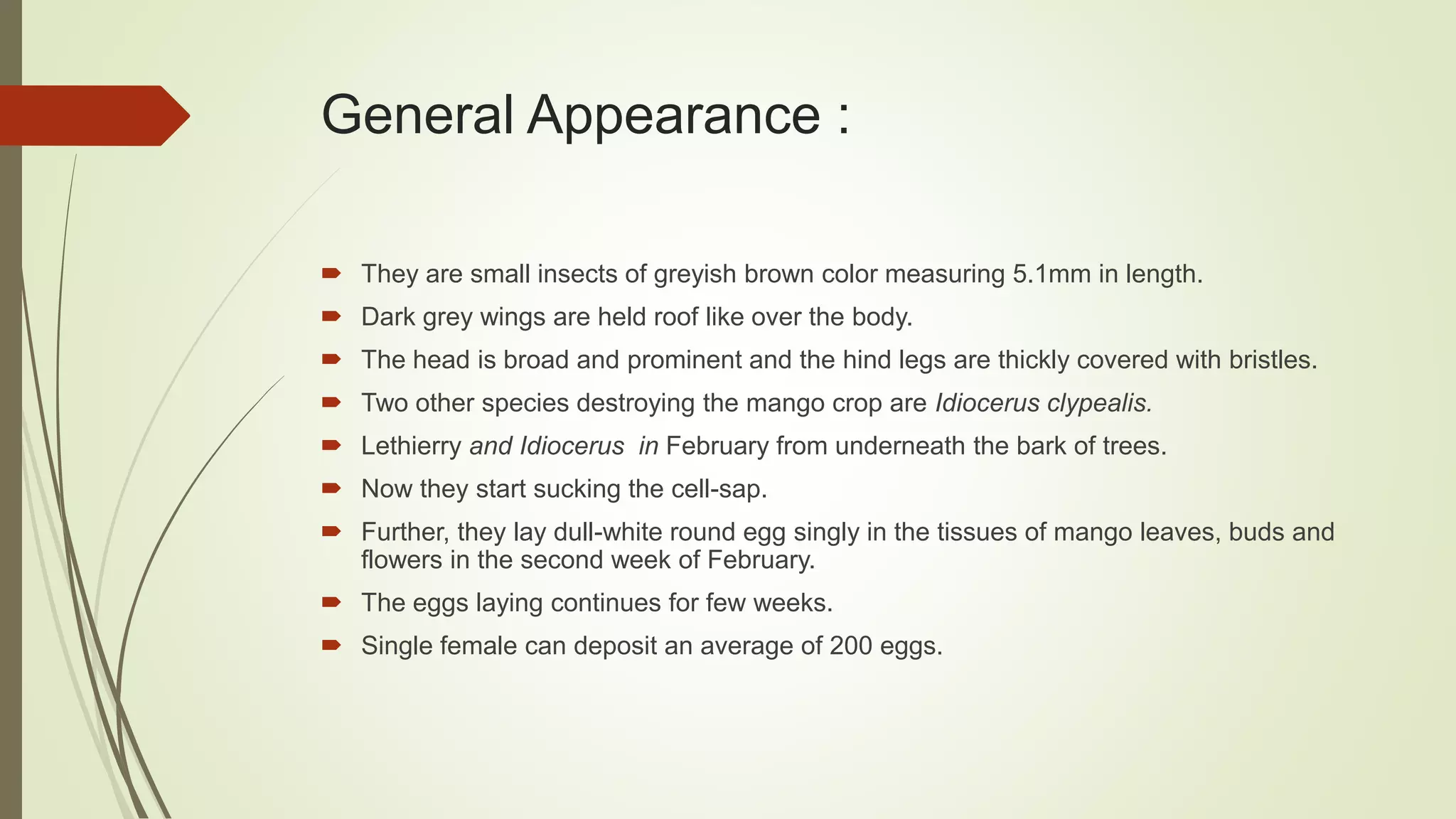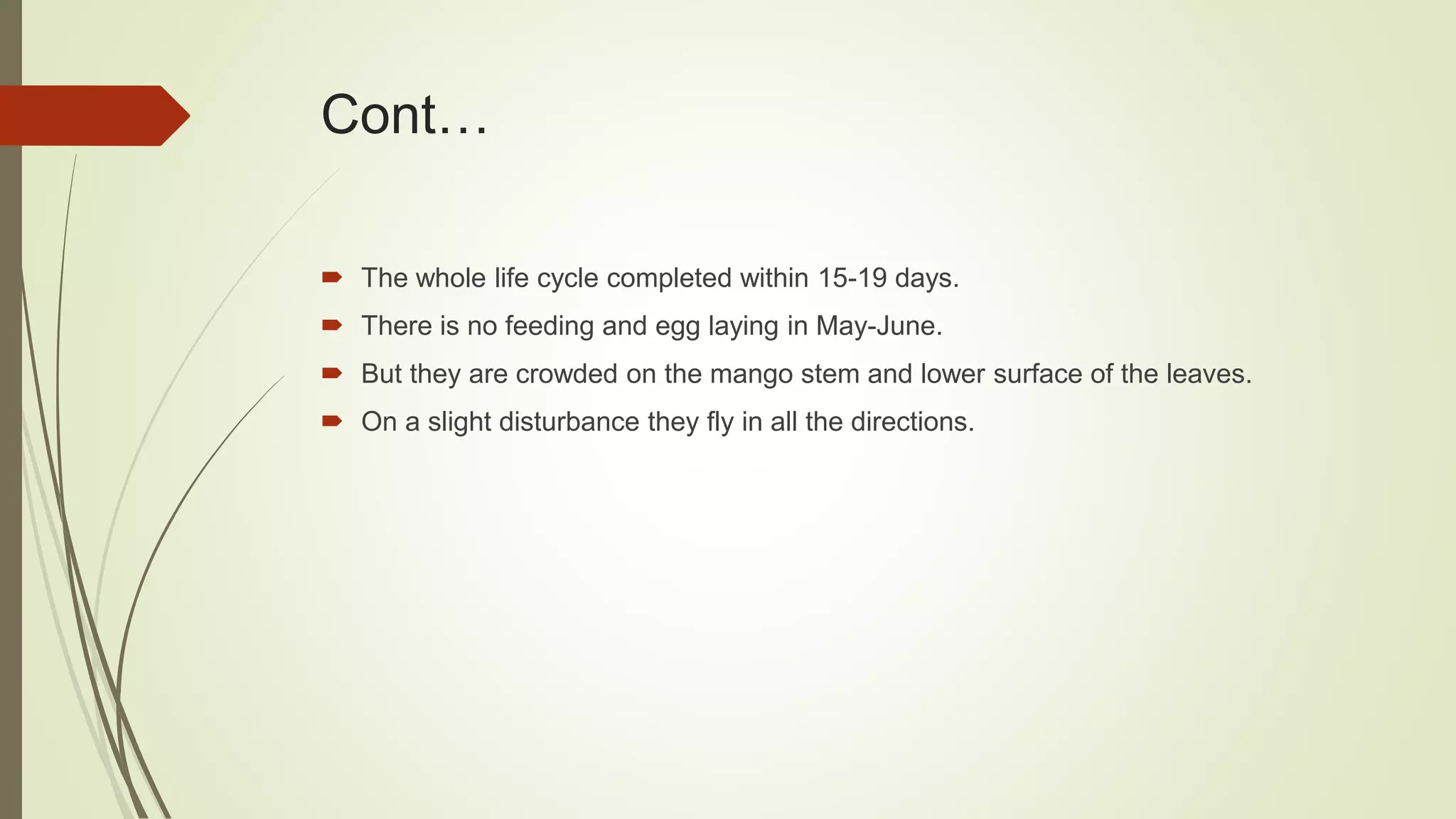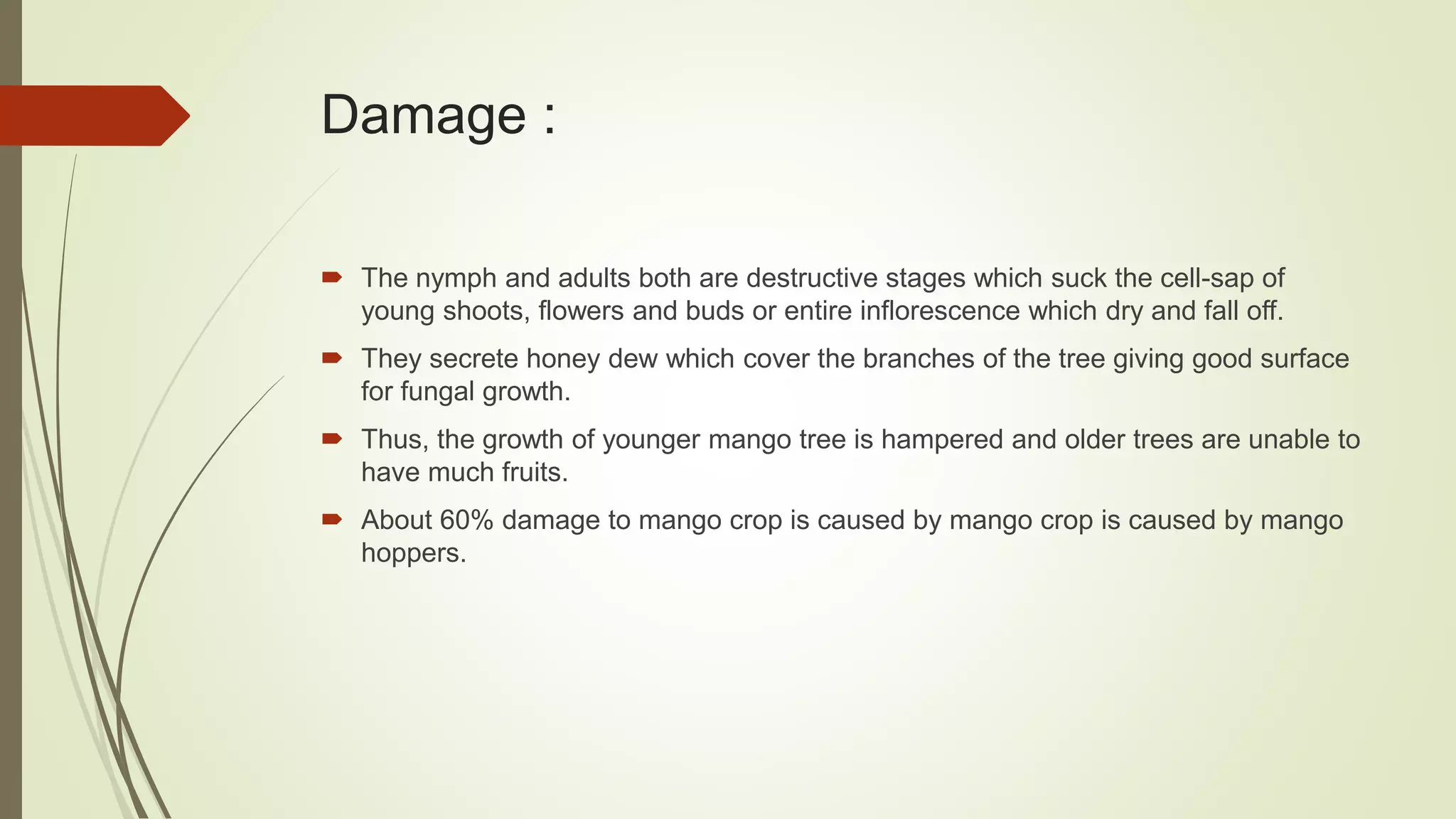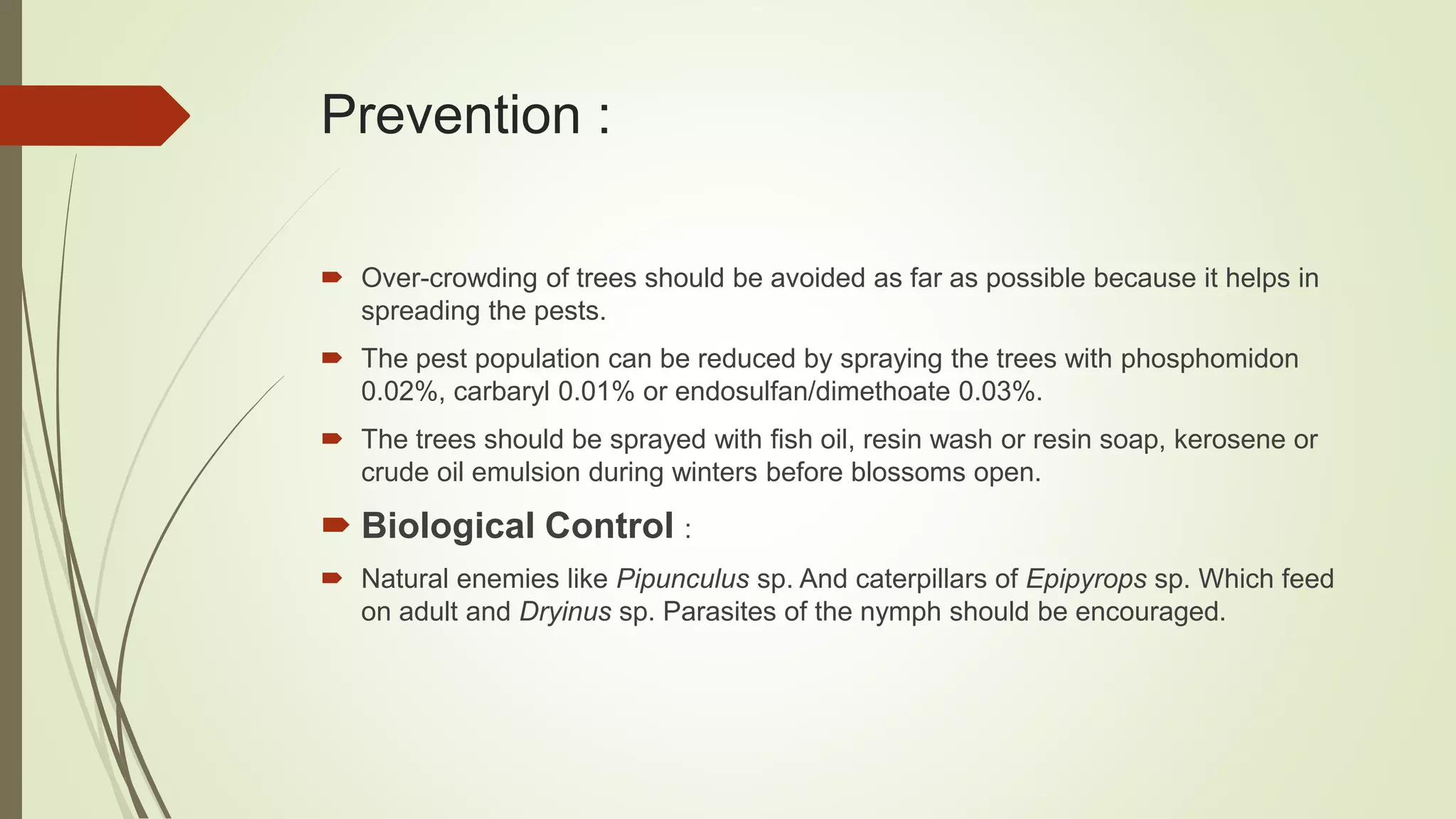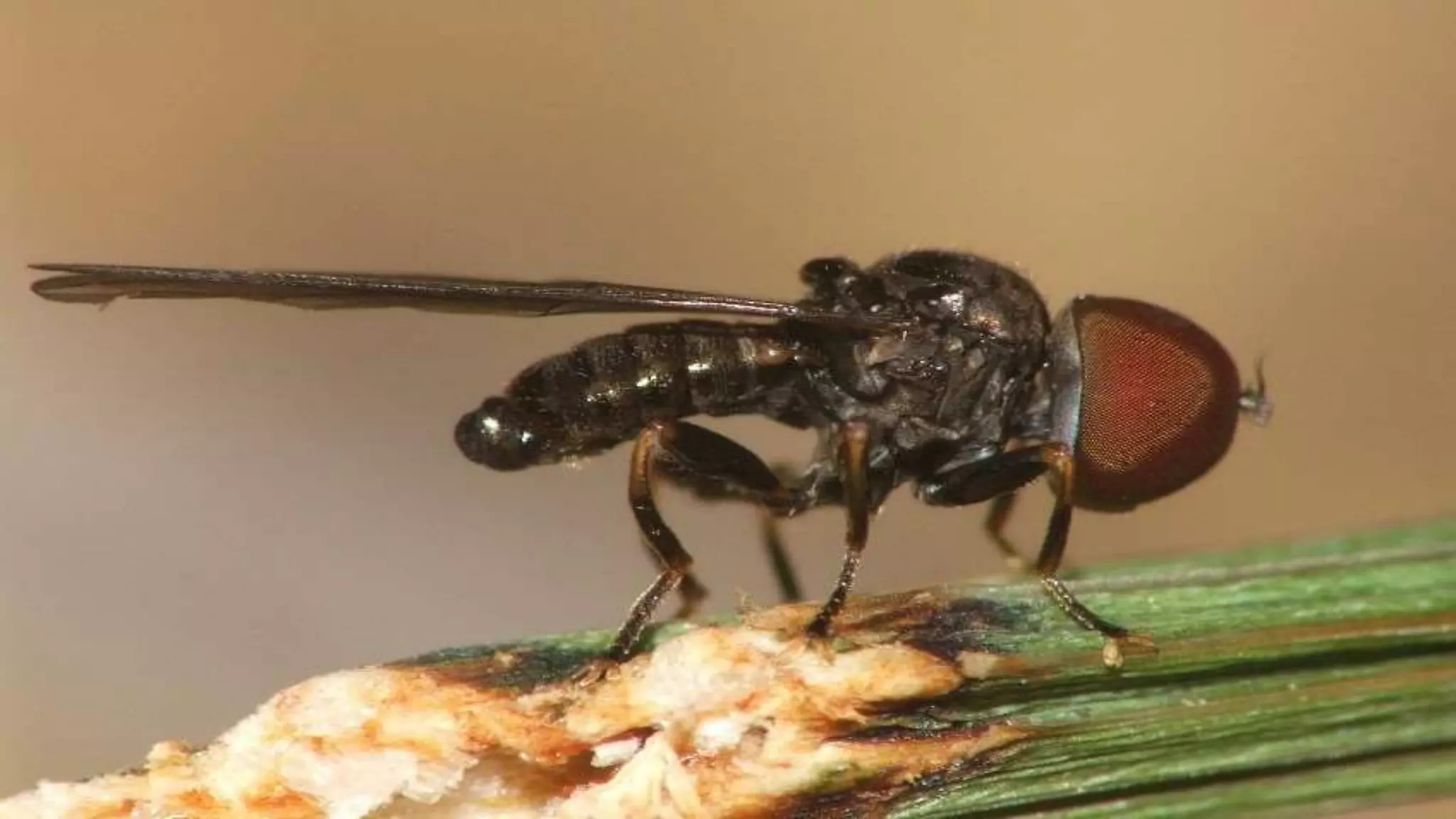The document summarizes information about several pests that damage fruit crops, including their life cycles and means of control. It describes the mango fruit fly (Dacus dorsalis), its eggs, larvae, pupa stages, and damage caused by feeding larvae. It also outlines the bark eating caterpillar (Inderbela quadrinotata), its eggs, larvae, pupa and damage done by larvae feeding on tree bark. The fruit piercing moth (Othreis fullonia) is also summarized, detailing its eggs, larvae, pupa, and damage from adult moths piercing and sucking fruit juices. Control methods for each pest include removing infected plant material, injecting pesticide into bore holes, and spraying







